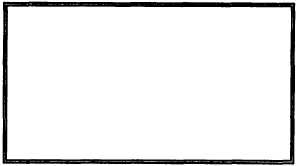When displayed with foreign ensigns, the U.S.
ensign must be displayed to the extreme right and on the
same level. International usage forbids displaying the flag
of one nation over that of another nation in time of peace.
The national ensign of other nations is displayed to the left
of the U.S. ensign, beginning in alphabetical order. The
only exception to this rule is when the U.S. naval activity
is in a foreign country, in which case that country's flag
will be to the immediate left of the U.S. ensign without
regard to alphabetical listing.
In a semicircular grouping, all flags other than the
U.S. ensign are displayed in alphabetical order starting
from left and reading clockwise. The U.S. ensign is
displayed in the middle of the semicircle.
The display of the national ensign from various
flagpoles is contained in NTP 13; as a general rule, the
right side of a flagpole is determined by looking from
the main entrance of a building towards the pole.
Flagpoles at naval shore activities are topped with a
brass ball of appropriate size.
Flag Size for Shore
The following dimensions may be used in
determining the size of the ensign to be flown. A larger
size is flown on Sundays and holidays and a smaller
size flown daily if such a choice is available.
Height of flagpole
Recommended size
Less than 35 feet
#8 (3' 6" × 6' 7 3/4")
35 to 55 feet#
7 (5' × 9' 6")
Greater than 55 feet
#5 (8' 11 3/8" × 17')
Miscellaneous Information
The union jack is not displayed ashore. The church
or Jewish pennant is not displayed above the national
ensign ashore, but separately if desired. The following
sites have been authorized to fly the national ensign
24 hours a day:
U.S. Capitol, Washington, D.C.
White House, Washington, D.C.
Fort McHenry, Baltimore, Maryland
Home of Betsy Ross, Philadelphia,
Pennsylvania
U.S. Marine Corps Iwo Jima Memorial,
Arlington, Virginia
Battle Green, Lexington, Massachusetts
Washington Monument, Washington, D.C.
Customs Ports of Entry
HOISTING AND LOWERING
The national ensign is never broken, but always
hoisted briskly and smartly and lowered ceremoniously.
The only exception to this practice is when the national
ensign is hauled down briskly and smartly from the gaff
as a ship shifts colors to the flagstaff when anchoring or
mooring between the hours of 0800 and sunset. On board
ships and crafts of the Navy, the union jack at the
jackstaff is hoisted, lowered, and half-masted with the
national ensign at the flagstaff.
HALF-MASTING THE ENSIGN
When half-masting the national ensign, it must, if
not already hoisted, first be hoisted to the peak, then
lowered to the half-mast position. Before lowering
from half-mast, the flag must be hoisted to the peak
and then lowered.
When the President directs that the national ensign
be flown at half-mast at military installations and
aboard ships, it must be flown at half-mast whether or
not the ensign of another nation is flown close-up
alongside the U.S. ensign.
When the national ensign is flown half-mast in
ships or crafts of the Navy, the church or Jewish
worship pennant, if flown, is hoisted just above the
national ensign.
If holiday colors are to be displayed on days other
than Sundays and holidays, or if colors are to be
displayed at half-mast on days other than Memorial
Day, the senior officer present, at 0745, hoists the
appropriate signal. If such signal is hoisted after 0800,
colors must be shifted or half-masted when the signal
is hauled down. If half-masting is ordered during
periods of dress or full-dress ship, only the national
ensign at the flagstaff is half-masted.
NOTE
On board ship or at a shore command,
upon all occasions of hoisting, lowering, or
half-masting of the national ensign, the mo-
tion of the senior officer present must be
followed except as prescribed for answering
a dip or firing a gun salute.
Table 10-2 shows the occasions when the flag is
half-masted as a symbol of mourning. As you can see
by table 10-2, there are occasions when ships under
10-3


